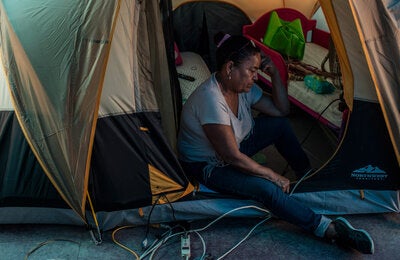
Washington, DC, 6 April 2017 (PAHO/WHO) - From Marilyn Monroe to Robin Williams, media sensationalizing of suicide is often repeated. Newspapers, radio and television often portray cases of adolescent suicide as heroic acts of love, comparable to Romeo and Juliet, the tragic work by William Shakespeare.
This type of coverage can generate a contagious effect, according to studies carried out in various countries. The World Health Organization (WHO) has identified media coverage of suicide as a strategic area that can help prevent suicide.
The Pan American Health Organization (PAHO) recently held a virtual seminar on best practices to report suicide in order to promote responsible reporting. More than 130 journalists, communications specialists and mental health professionals from 30 countries in the region participated.
"Suicide contagion is real," said Dan Reidenberg, an expert in mental health and suicide prevention. "An increase in suicides following media reporting has to do with the frequency of reports, placement of reports, the images, the detail of means used, and language used."
In his presentation, Reidenberg, who is co-Chair of the International Media and Suicide Task Force, recommended avoiding simplistic explanations, because "suicide is complex and rarely can be attributed to one single cause." Instead, journalists should take advantage of the opportunity to explain the complexity of this issue.
Responsible coverage of suicides can contribute to their prevention. WHO published a document in 2000 on "Preventing suicide: A resource for media professionals," a guide for addressing this subject worldwide.
In the majority of cases, people who end their lives have experienced severe depression. Depression is the primary cause of disease and disability in the world. For this reason, WHO selected it as the theme of World Health Day this year (April 7).
Devora Kestel, Chief of the Mental Health and Substance Use unit at PAHO/WHO, warned that "In the worst cases, depression can lead to suicide." Kestel asked journalists to "cover suicide carefully to reduce the risk of imitative behavior, to change incorrect perceptions and encourage help seeking."
Recommendations for coverage include:
- Avoid describing suicide as inexplicable or without warning; include suicide warning signs
- Avoid glorifying or romanticizing the act of suicide or a person who died by suicide; try to present a balanced story on the person
- Avoid relaying the method, location or details of the person who died by suicide; limit details to the facts the audience needs to know
- Avoid portraying suicide as a common or acceptable response to life's adversities
- Avoid sensationalizing headlines
- Avoid using stigmatizing language
- Avoid harmful graphics
- Do not share the content of a suicide note
- Avoid quoting police or first responders
- Provide resources whenever possible



